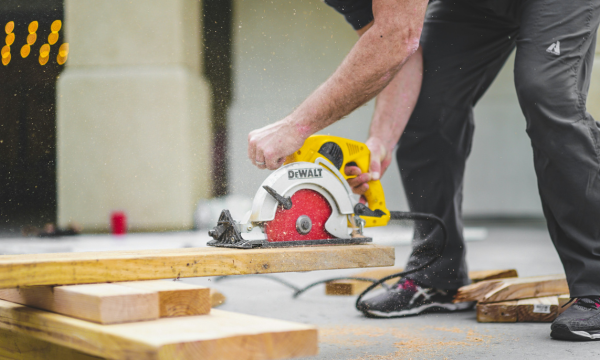By Alan Harrison, Digital Sales Manager at Protrade
Almost every industry has been impacted by modern technology but certain sectors like construction are yet to fully realise the potential of these advances.
It is expected that over the coming years, technology can help the UK’s construction industry overcome a number of challenges it is grappling with; from skills shortages to increased demand.
The skills shortage looks set to worsen as the current workforce is ageing without new talent to replace it. According to a report from The Chartered Institute of Building, over 50s currently make up 22% of construction workers in the UK and 15% are in their 60s.
They are under pressure to be more productive due to the rise of urbanisation, which is creating greater demand for houses, hospitals, roads and other infrastructure. There are currently £650 billion worth of projects planned under the national infrastructure programme.
Last year, the business and industry minister announced a £72 million investment to help modernise the construction industry with virtual reality, digital design and offsite manufacturing technologies.
In this article, Protrade takes a look at and discusses just some of the ways technology can help ease the burden for construction and make the industry more productive.
Improved efficiency
Technology like Building Information Modelling (BIM) is already being used to plan projects more efficiently, and now augmented reality and virtual reality can be used to provide even more accuracy. Using technology to simulate the environment you’ll be working in can help reduce errors and increase safety.
While the rise of artificial intelligence and machine learning technology can analyse data from past projects to help provide more accurate estimates for completion dates and costs.
Technology also helps ease the burden when carrying out reporting because analytics can help visualise and make sense of raw data without having to do complex mathematical calculations yourself. This can be particularly informative when it comes to providing insights into potential problems which might not be immediately obvious. For example, it can help work out where waste is occurring and whether materials are being used efficiently.
Although not a new concept, Bluetooth connectivity is increasingly being incorporated within power tools such as digital laser measurers and cordless tools such as dust extractors. Not only does Bluetooth connectivity enhance efficiency in ways such as allowing workers to cut the time spent measuring dimensions in half, it also allows increased accuracy.
Investing in innovative technology and modern power tools can have large upfront costs, but the opportunity for return on investment and increased productivity is worth it.
Better collaboration and communication
Large and complex construction projects are notorious for being delivered late and over budget for a number of reasons but one of the obvious challenges they face is ensuring effective communication.
Here technology offers a myriad of solutions that can help make it easier for different experts to collaborate. From architects and contractors to plumbers and electricians, everyone can make use of technology to aid communication.
Cloud technology, for example, makes it easier to share information even when you are not physically in the same location. Real-time data can be shared so everyone has access to the latest information which can help avoid unnecessary delays.
Pictures and videos can be shared with those working off-site and because these can be accessed from various devices, they can be viewed even when you are on the move.
This makes it easier for contractors and project managers to monitor progress remotely. Project managers can now use software to help them automate the more repetitive tasks involved in planning and reporting.
In fact, one of the great benefits of technology is that it can automate laborious tasks so workers have more time to focus on more vital aspects of their job. This includes filling in timesheets and filing expenses. When you are under pressure to deliver a project on time, it can be frustrating to spend hours on record keeping and dealing with documentation. Using technology can speed up such mundane but essential work.
Robots can also be used to help with other repetitive tasks like brick laying, so workers’ skills can be used more effectively for aspects of the work that need human supervision.
Reduced costs
As well as analysing project costs, technology can be used to save money by making sure tools are kept safe.
Construction involves using expensive machinery and tools which can be costly to replace if they go missing. Tool tracking software and stock inventory management can help make sure you don’t lose sight of such equipment and can always keep a tab on its location.
Such software works by attaching sensors to tools and materials which can also be used to track how equipment moves throughout the day. This information can then be used to work out where best to store equipment to make sure it is always on hand when needed.
Enhanced safety
There’s no getting away from the fact that construction can be a dangerous industry to work in and safety is of paramount importance and one aspect that often goes overlooked is how technology can be leveraged to improve construction site safety.
Projects can be stalled or set back if safety is a concern which is why using technology to safeguard workers is a no brainer.
Augmented reality and virtual reality can be used to train workers in an environment that gives a much more realistic depiction of the hazards they may encounter.
Wearable technology is making it easier to monitor safety on site and identify when working practices could be dangerous. Such technology can give feedback on improving posture for example. Or, it could alert workers when they have entered a dangerous zone. This can help prevent common injuries caused by slipping or tripping.
Smart clothing, or e-textiles, that can monitor vital signs like respiration rate, skin temperature, and heart rate will also make their way to the construction site. These wearables will be able to monitor a worker’s posture, track movements, determine if they are suffering from fatigue and whether they are intoxicated or under the influence of narcotics. Keeping a watchful eye on workers can help predict an accident before it occurs.
Drones are also being used to enhance safety on construction sites as they can help provide pictures from construction sites which can be compared to BIM models to work out progress and check for accuracy.
Drones can also assist in conducting jobsite inspections and identify potential hazards each day as well as monitor workers throughout the day to ensure everyone is working safely.
Final thoughts
Given the pressure the construction industry is under, it is clear that changes need to be made. Taking advantage of new technology is therefore essential to remaining competitive because it can help tackle many of the issues being faced.











